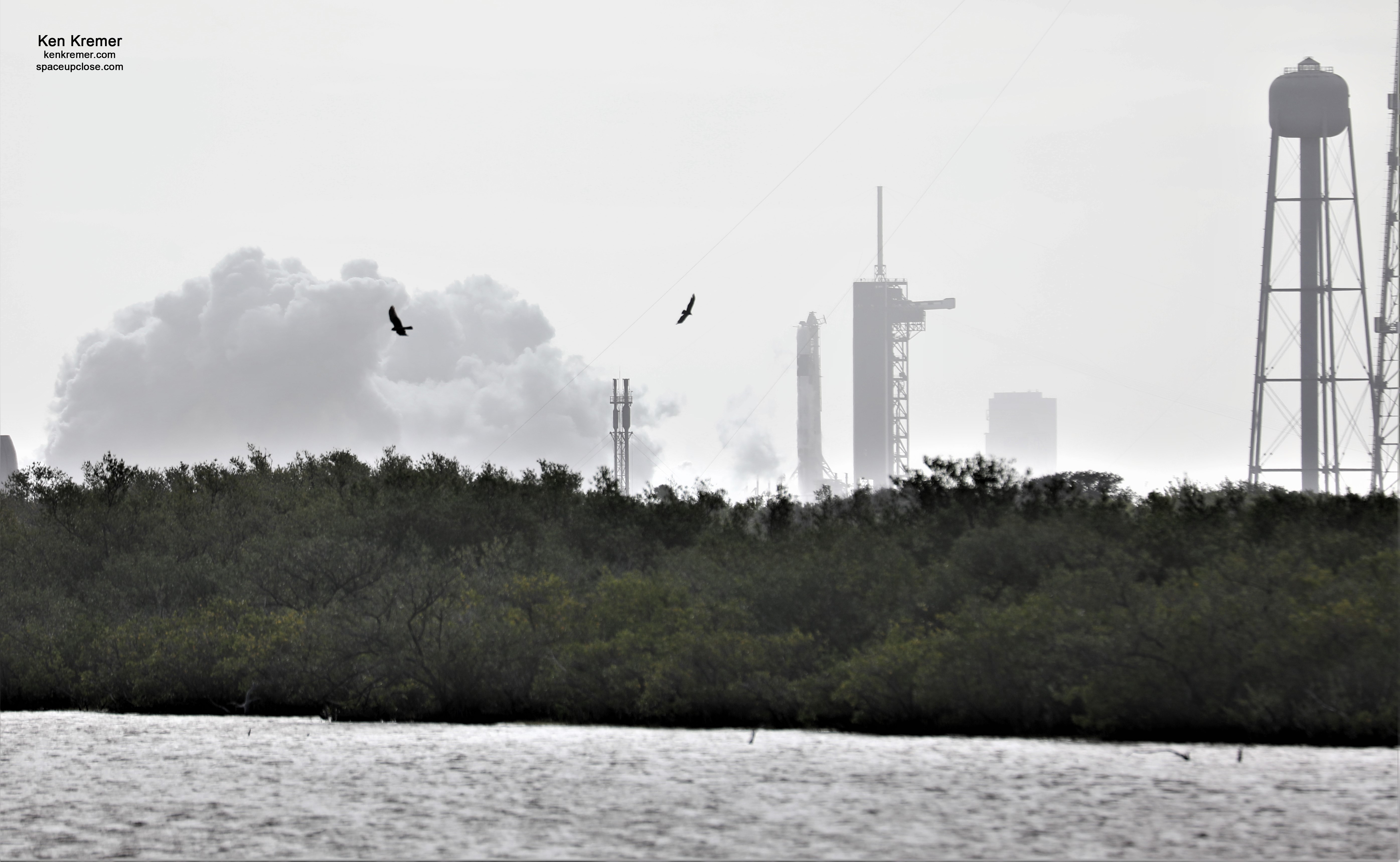
For SpaceUpClose.com & RocketSTEM
MERRITT ISLAND NATIONAL WILDLIFE REFUGE, CAPE CANAVERAL, FL – SpaceX technicians conducted a successful static fire test this morning, Saturday, Jan. 11 of the Falcon 9 first stage rocket slated for the critical Crew Dragon In-Flight Abort Test (IFA) for NASA at Launch Complex-39A to prepare for the truly monumental upcoming launch from NASA’s Kennedy Space Center in Florida – now confirmed for 1 week from today next Saturday Jan. 18.
The In Flight Abort demonstration test is a critical test hurdle for SpaceX to prove that a human rated Crew Dragon spacecraft will be pulled away safely in a split second in case of a catastrophic failure of the Falcon 9 rocket in flight at high altitude and save the astronauts lives using the Super Draco abort engines mounted on the side wall of the spaceship Crew Dragon.
NASA astronauts will only fly aboard following a successful IFA demonstration.
The brief hold down hotfire test of the SpaceX Falcon 9 first stage rocket and 9 Merlin 1D engines raised vertical took place today Saturday, Jan. 11 at 10:10 a.m. EST (1510 GMT) on Launch Complex-39A on Kennedy Space Center under cloudy skies and hefty winds on Florida’s Space Coast.
The Falcon 9 at pad 39A for the IFA test flight is recycled Booster 1046 and comprises the first and second stages. The rocket lacks the SpaceX Crew Dragon capsule on top to keep it safe inside the hangar during the hold down static fire test.
Enjoy my Space UpClose photos taken this morning Jan. 11 from the Merritt Island National Wildlife Refuge and Cape Canaveral National Seashore.
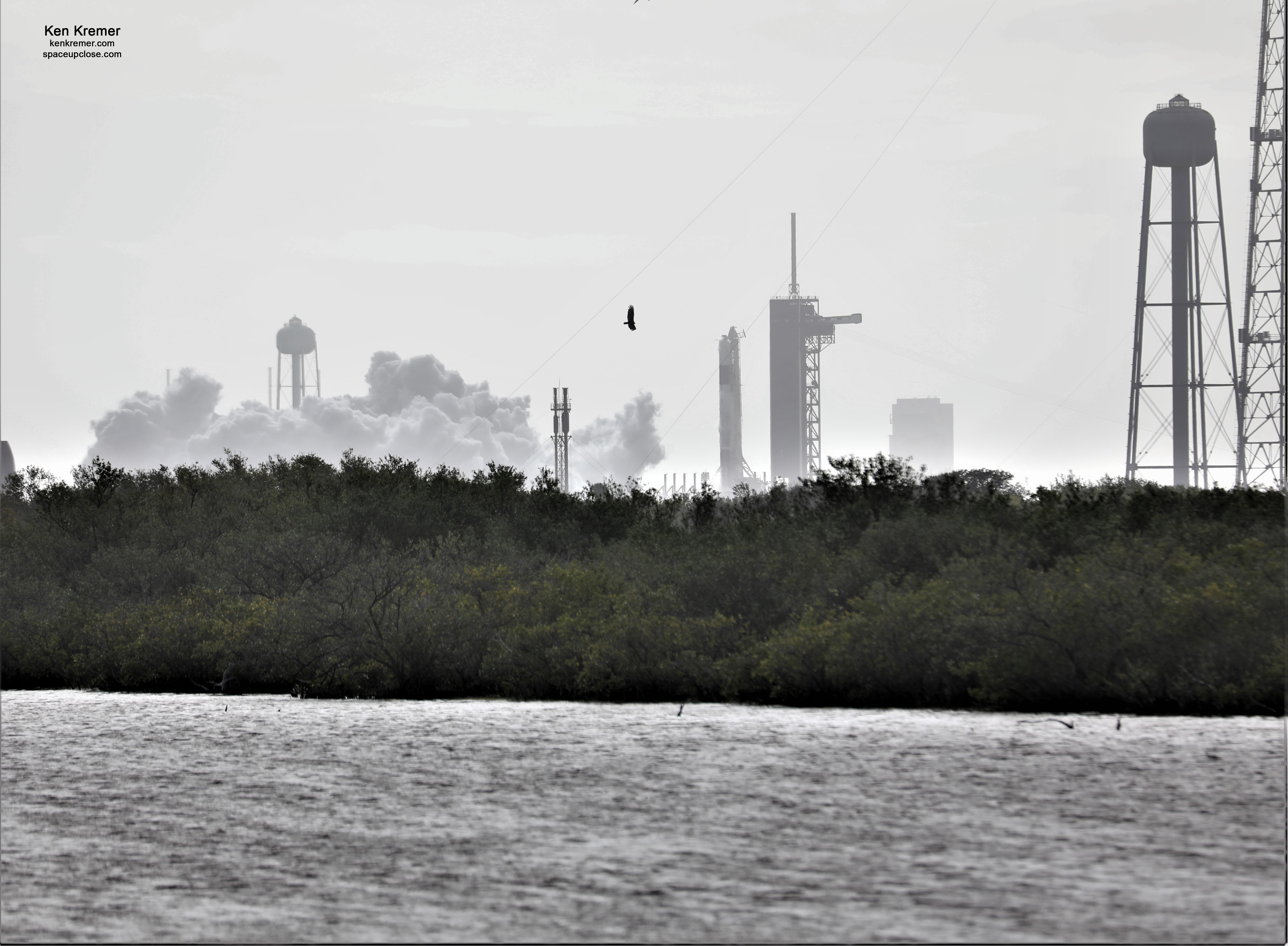
A small crowd of space media friends and a members of the public observed the test.
The whiteish-grey exhaust gushed out of the flame trench for around 7 seconds or so and a vapor cloud soon swirled around and above and grew for at least a good long minute despite the hefty before dissipating and disappearing in roughly two minutes during the bright daylight putting on quite an exciting show!
We heard the rockets roar a few seconds later from our excellent vantage point about 4 miles away from pad 39A – as the wind was rushing in our direction.
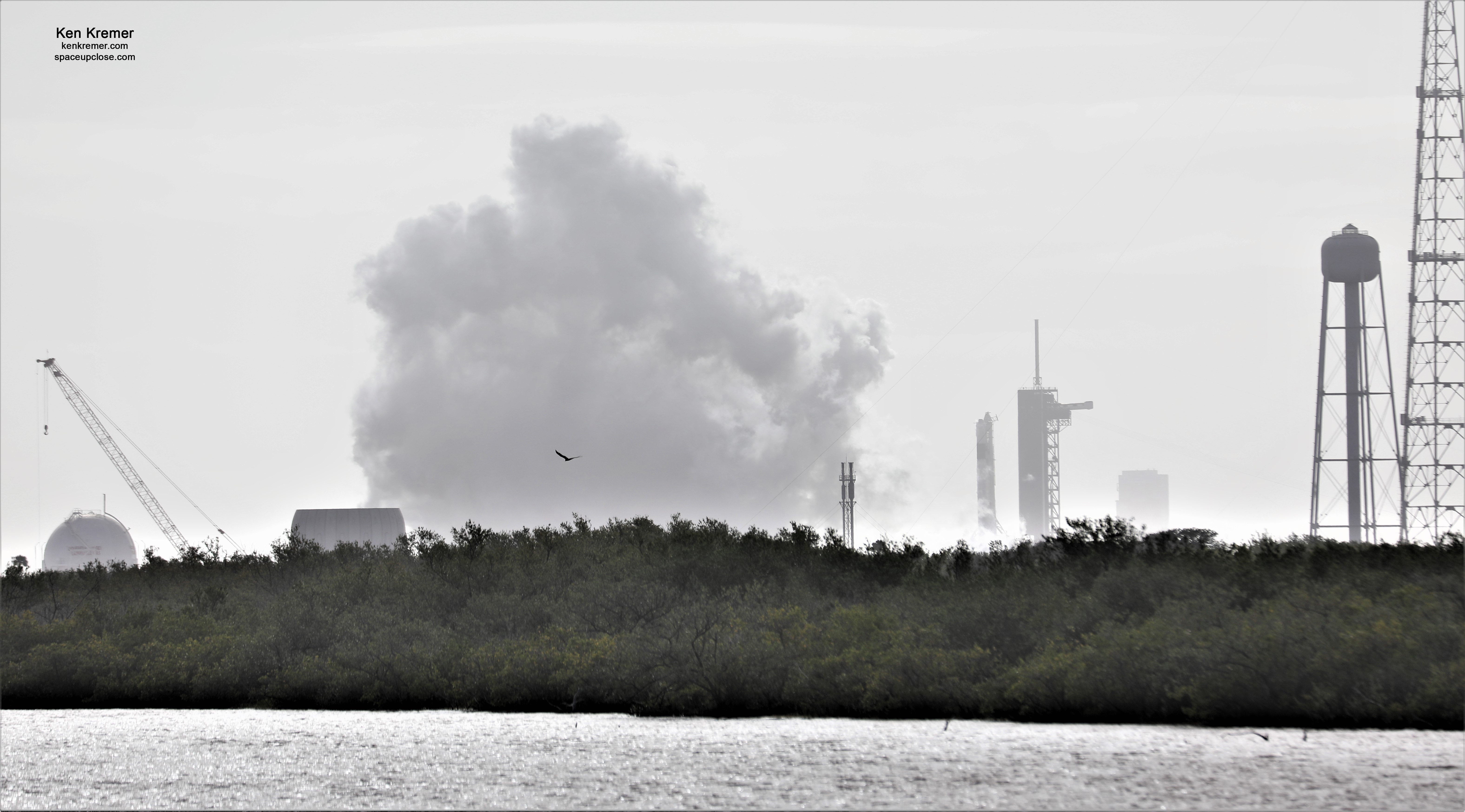
Liftoff of the IFA mission is now targeted for a four hour launch windown that opens at 8 a.m. EST Saturday, Jan. 18 (1300 GMT). from Launch Complex-39A on NASA’s Kennedy Space Center, FL.
The hold down engine test with the erected Falcon 9 rocket involved the brief ignition of all nine Merlin 1D first stage engines for several seconds generating some 1.7 million pounds of thrust at pad 40 while the two stage rocket was restrained on the pad with hold down clamps.
SpaceX confirmed a good test result by tweet about a half hour later:
“Static fire of Falcon 9 complete – targeting January 18 for an in-flight demonstration of Crew Dragon’s launch escape system, which will verify the spacecraft’s ability to carry astronauts to safety in the unlikely event of an emergency during ascent,” SpaceX confirmed.
Static fire of Falcon 9 complete – targeting January 18 for an in-flight demonstration of Crew Dragon’s launch escape system, which will verify the spacecraft’s ability to carry astronauts to safety in the unlikely event of an emergency during ascent
— SpaceX (@SpaceX) January 11, 2020
SpaceX CEO Elon Musk also chimed in with a ‘go-ahead’ for launch:
“Critical test launch before flying astronauts is green for Jan 18,” tweeted Musk
Critical test launch before flying astronauts is green for Jan 18 https://t.co/r4mcuCfCil
— Elon Musk (@elonmusk) January 11, 2020
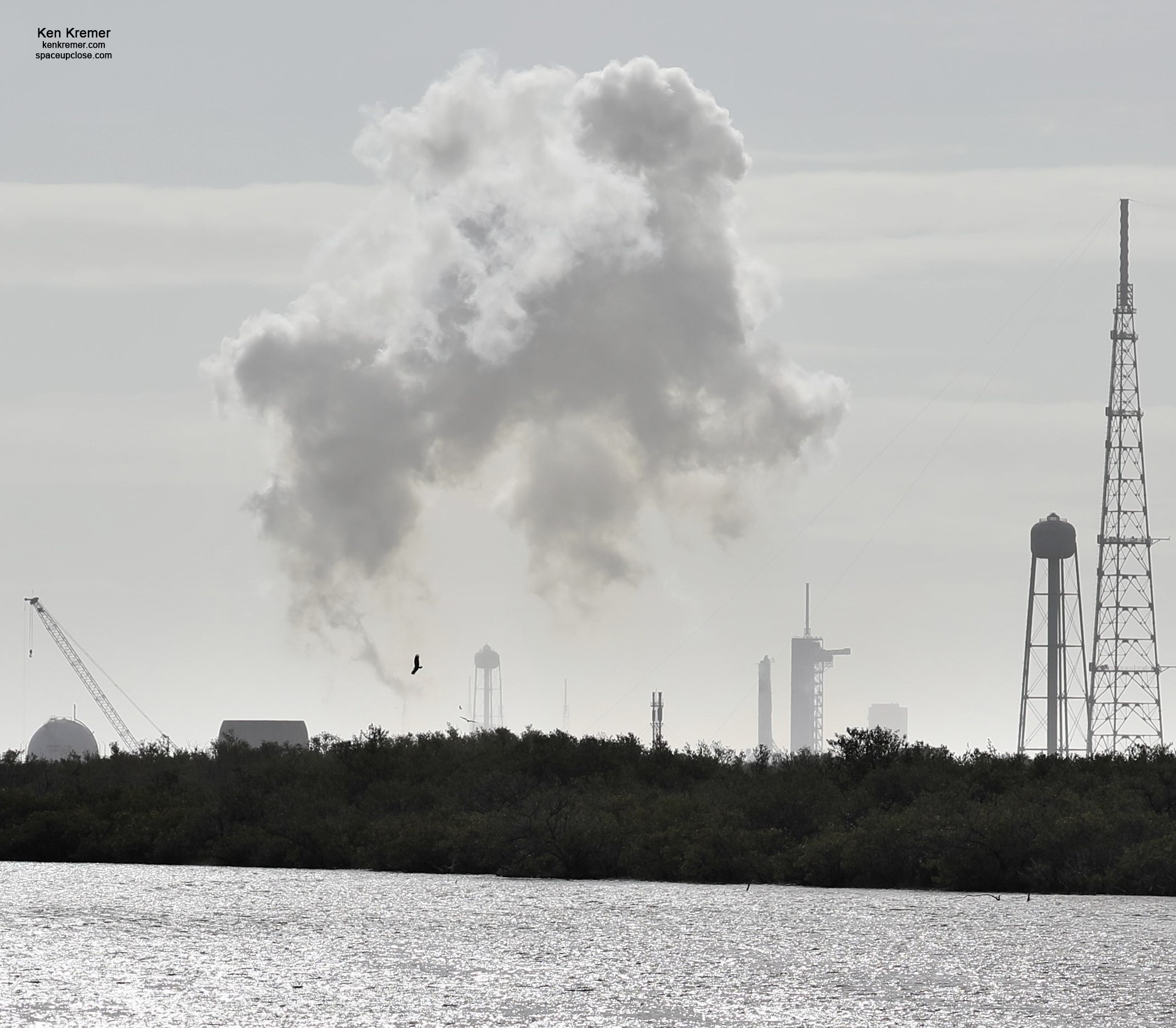
The demonstration of the capability of Crew Dragon’s in-flight launch escape system engines to save astronauts lives in case of a catastrophic rocket failure is part of NASA’s Commercial Crew Program.
The goal of the Commercial Crew Program is to resume human spaceflight launches of NASA astronauts from American soil on American rockets to the International Space Station (ISS) – hopefully sometime by mid-2020.
The In-Flight Abort Test (IFA) counts as one of the final major tests for SpaceX to successfully achieve before NASA will permit its astronauts will fly aboard the Crew Dragon spacecraft.
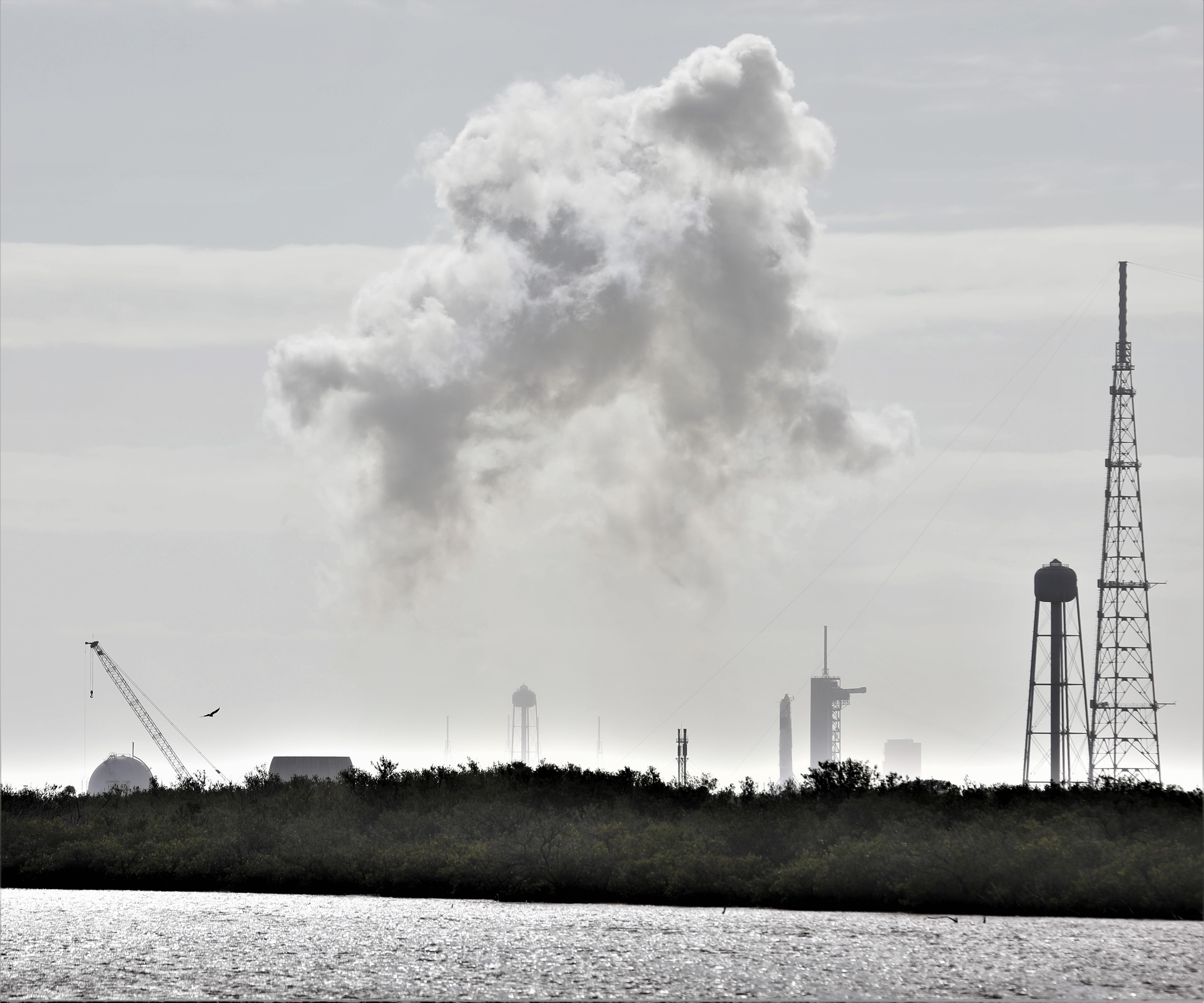
Vigorous venting of liquid oxygen was observed in the final minutes of the countdown to the test as is normal.
The hold down static fire test is routinely carried by SpaceX to ensure all is ready with the rocket.
During the engine test all nine Merlin 1D first stage engines are briefly ignited for several seconds.
During Tuesday’s hold down static fire test, the rocket’s first and second stages are fueled with liquid oxygen and RP-1 propellants just like an actual launch, and a simulated countdown was carried out to the point of a brief engine ignition lasting around 3 seconds or so.
The rocket will now be lowered horizontal and rolled back down the ramp and returned to the pad 39A hanger to attach the Crew Dragon spacecraft.
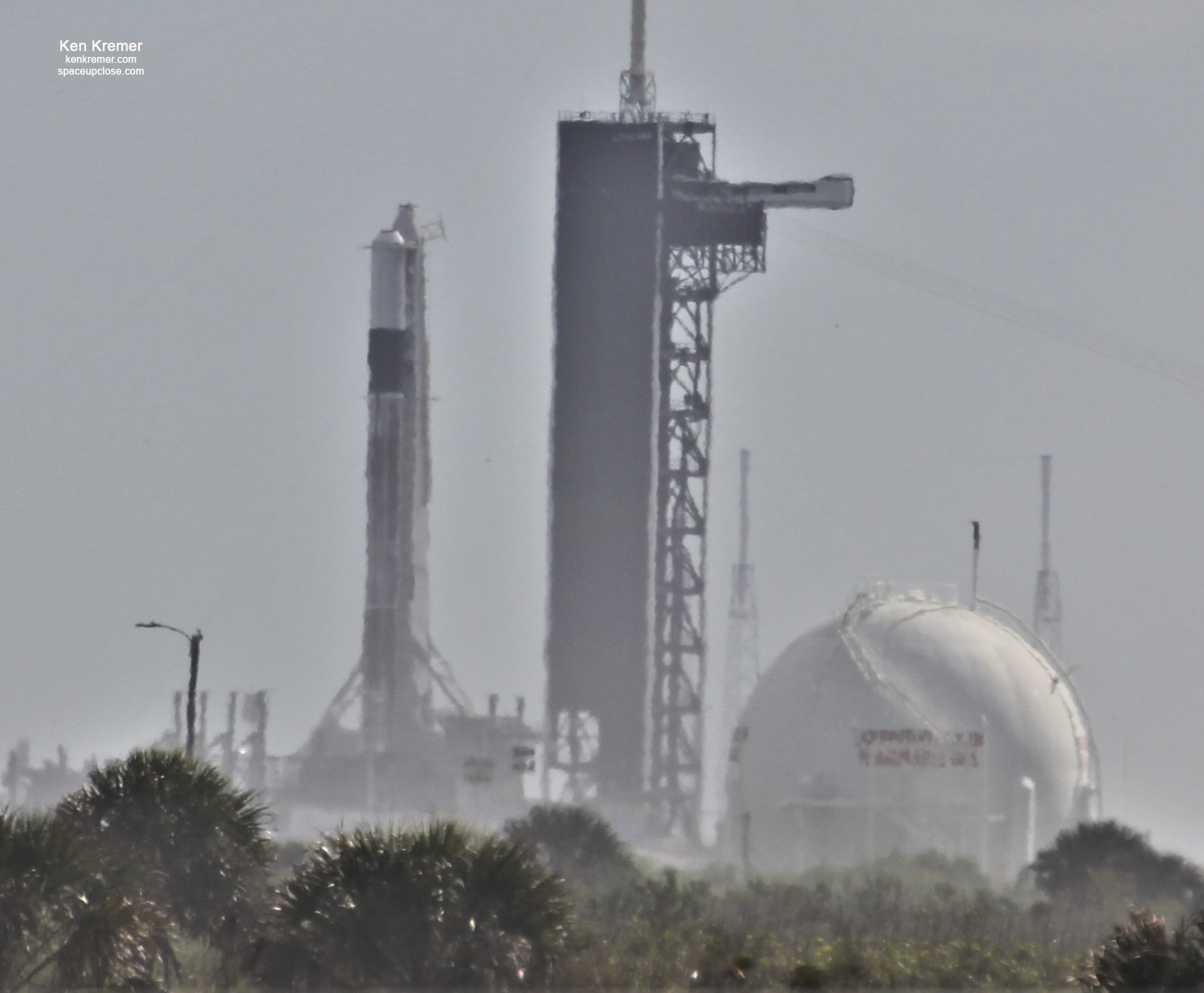
There are no grid fins and landing legs attached to the side of the booster – because it is not expected to survive the survive the severe aerodynamic forces induced by the IFA test after triggering separation of the Crew Dragon.
The successful static fire test paves the path towards the In-Flight Abort (IFA) demonstration test flight to prove out the emergency escape capabilities of the SuperDraco thrusters.
The In Flight Abort test is a critical test hurdle SpaceX must successfully pass to prove that a Crew Dragon spacecraft will be pulled away safely in a split second in case of a catastrophic failure of the Falcon 9 rocket in flight and save the astronauts lives using the Super Draco abort engines mounted on the side wall of the spaceship Crew Dragon – before NASA will permit its astronauts to be launched.
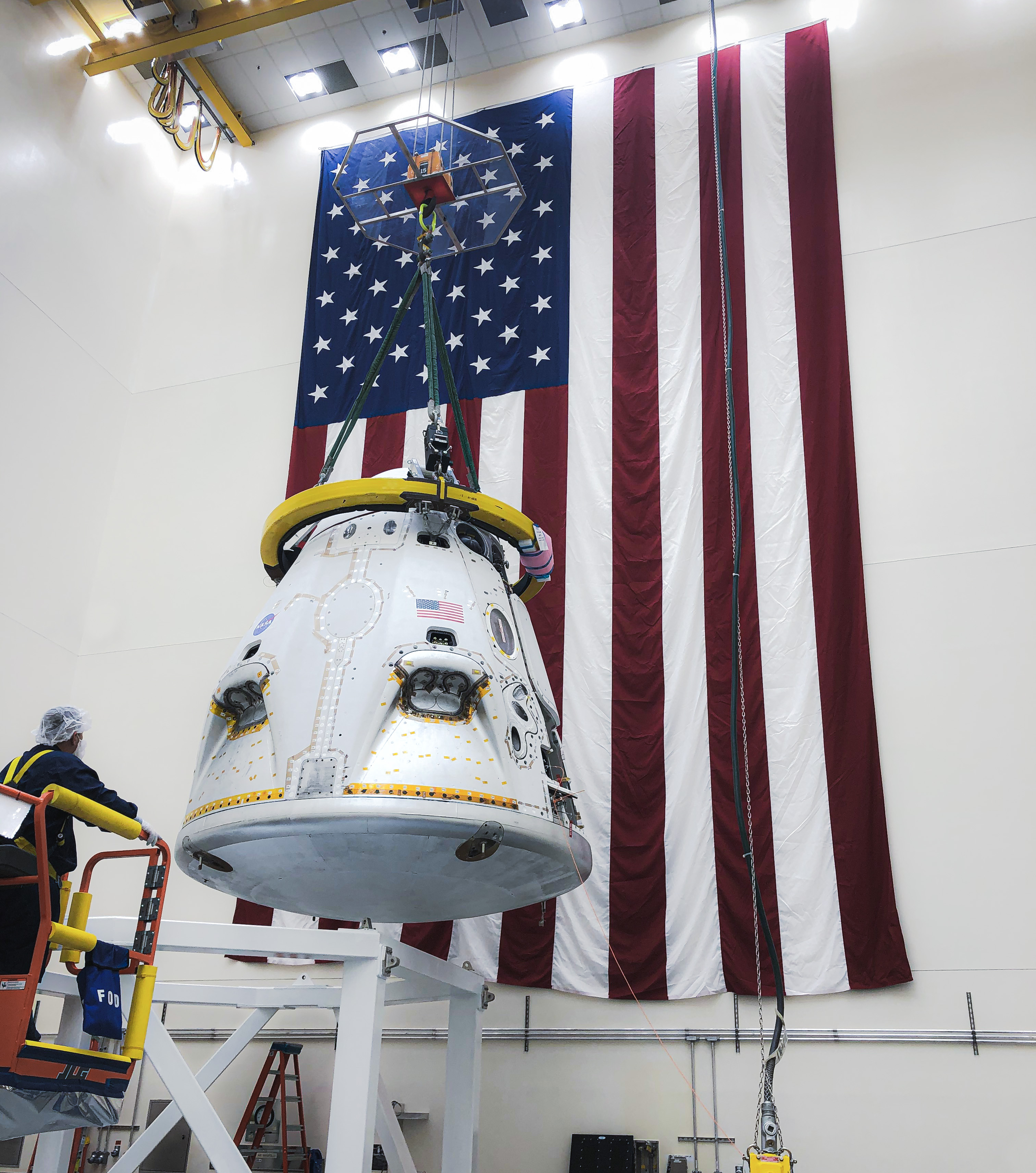
The IFA will be triggered during the period of maximum aerodynamic pressure.
The in-flight abort test will demonstrate whether the capsule can survive an abort of the Falcon 9 rocket through “one of the harshest moments of launch: max Q, or maximum aerodynamic pressure.”
At about 1 minute into flight SpaceX engineers will intentionally trigger an abort when the Falcon 9 and Crew Dragon reach Max Q.
Late last year on Nov. 13, 2019 SpaceX completed a critical and successful static test firing of the Crew Dragon emergency SuperDraco abort thrusters on a ground stand at Cape Canaveral in a confidence building measure.
SpaceX’s plans to launch astronauts on the Crew Dragon were significantly delayed when similar static fire test unexpectedly triggered the explosive destruction of a similar spacecraft seven months ago in April 2019.
The apparently successful ground test firing carried out at SpaceX at Landing Zone-1 (LZ-1) at Cape Canaveral Air Force Station, Florida indicated an apparently successful resolution to the unexpected issue with a high-flow helium pressurization system valve that caused a catastrophic failure during the previous test firing on April 20, 2019 – due to the high pressure interactive explosion between nitrogen tetroxide and the valve manufactured from titanium.
SpaceX UpClose witnessed the test firing of the Crew Dragon SuperDraco abort thrusters from nearby in Cape Canaveral. Enjoy our photos below.
The SuperDracos are side mounted on the wall of the Crew Dragon spacecraft in four clusters of two.
The Super Draco abort thruster engines that are intended to save the astronauts lives during a launch emergency instead exploded while undergoing static fire ground testing on the LZ-1 test stand at Cape Canaveral Air Force Station – that resulted in an explosion and fire that completely consumed the DM-1 Crew Dragon capsule that flew to the ISS in March 2019 on the Demo-1 mission.
The IFA test will utilize the Crew Dragon tested on Nov. 13 – and designated as Demo-2 since Demo-1 was destroyed.
The key IFA spaceflight test hardware required for SpaceX’s next step to eventually launch NASA astronauts to the International Space Station (ISS) as part of the agency’s Commercial Crew Program had already arrived at the Kennedy Space Center (KSC) in Florida in early October. Read our earlier story.
Two NASA astronauts Bob Behnken and Doug Hurley will fly aboard the inaugural piloted Crew-1 Crew Dragon whenever it does launch to the ISS.
SpaceX CEO Elon Musk recently tweeted that although the spaceflight hardware for Behnken and Hurley would be at the Cape by February 2020- a few more months of reviews were required first before setting a target launch date.
Crew Dragon should be physically ready & at the Cape in Feb, but completing all safety reviews will probably take a few more months
— Elon Musk (@elonmusk) December 30, 2019
The Crew- 1 Dragon replaces the Demo-2 Dragon originally intended for their mission. Demo-2 is being used for IFA in place of Demo-1 Dragon following its destruction last April.
The commercial Crew Dragon vehicle is being developed under a contract awarded to SpaceX by NASA back in 2014 valued at more than $3.1 Billion with the goal of restoring US human spaceflight capabilities in a safe, reliable and cost effective manner and ending our sole reliance on the Russian Soyuz capsule.
My static fire test photos were featured on WFTV Channel 9 ABC TV News Orlando evening news show Jan. 11.
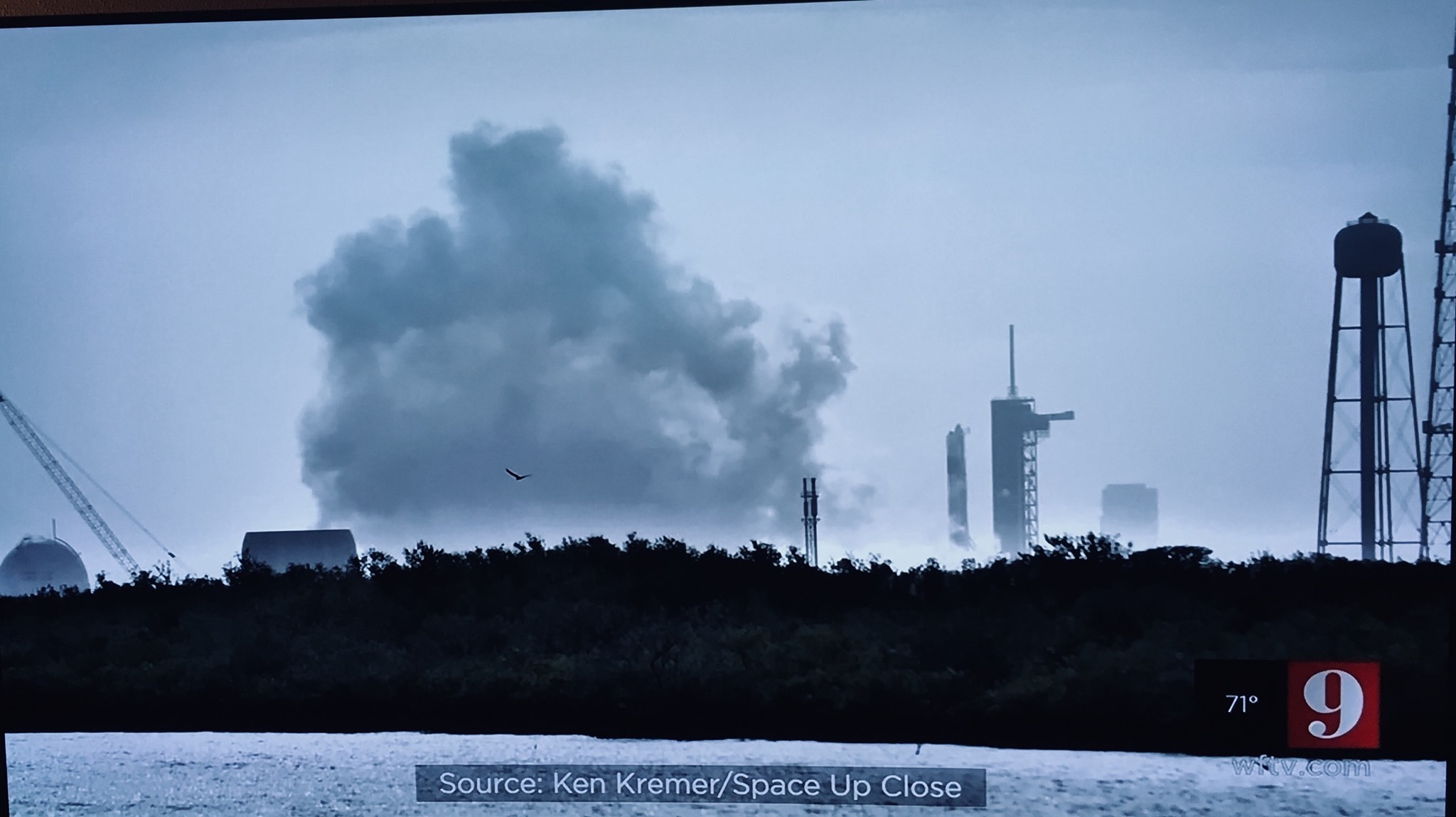
Watch Ken’s continuing reports onsite for live reporting of upcoming SpaceX and ULA launches including In-Flight Abort, Starlink and Solar Orbiter in Jan/Feb 2020 at the Kennedy Space Center and Cape Canaveral Air Force Station.
Stay tuned here for Ken’s continuing Earth and Planetary science and human spaceflight news: www.kenkremer.com –www.spaceupclose.com – twitter @ken_kremer – email: ken at kenkremer.com
Dr. Kremer is a research scientist and journalist based in the KSC area, active in outreach and interviewed regularly on TV and radio about space topics.
………….
Ken’s photos are for sale and he is available for lectures and outreach events




